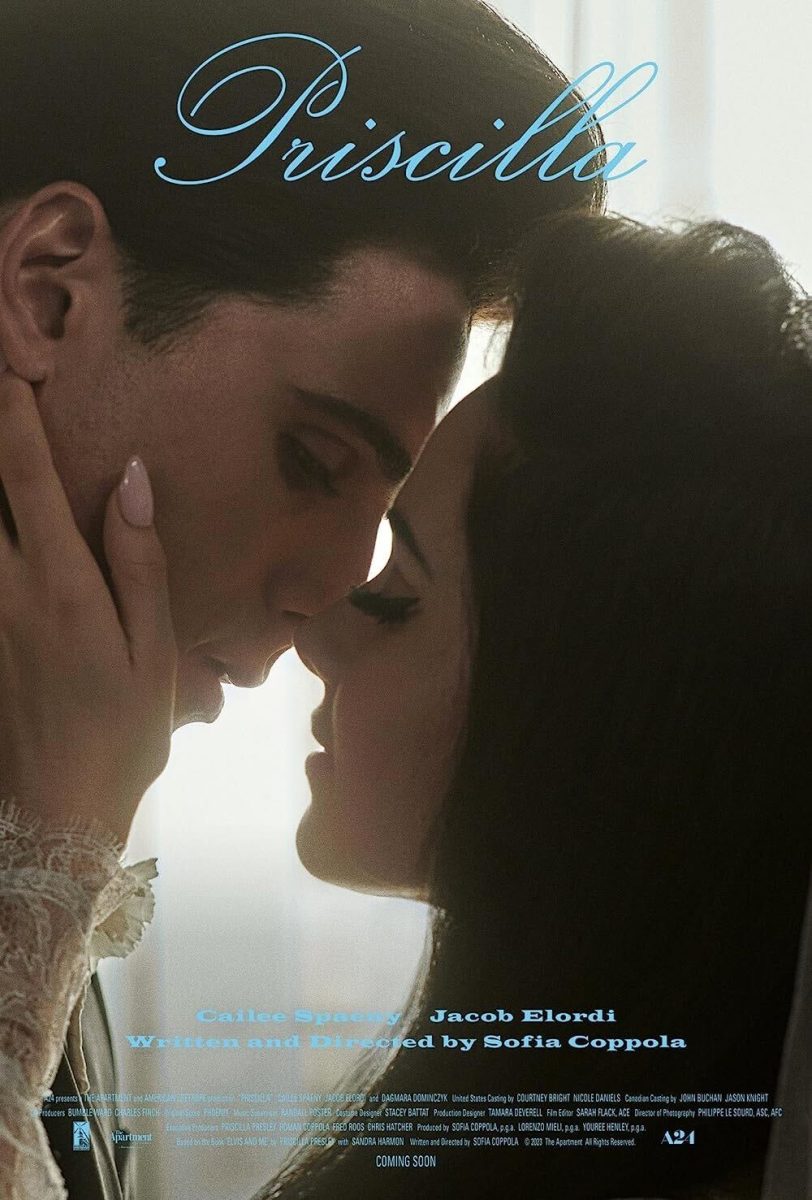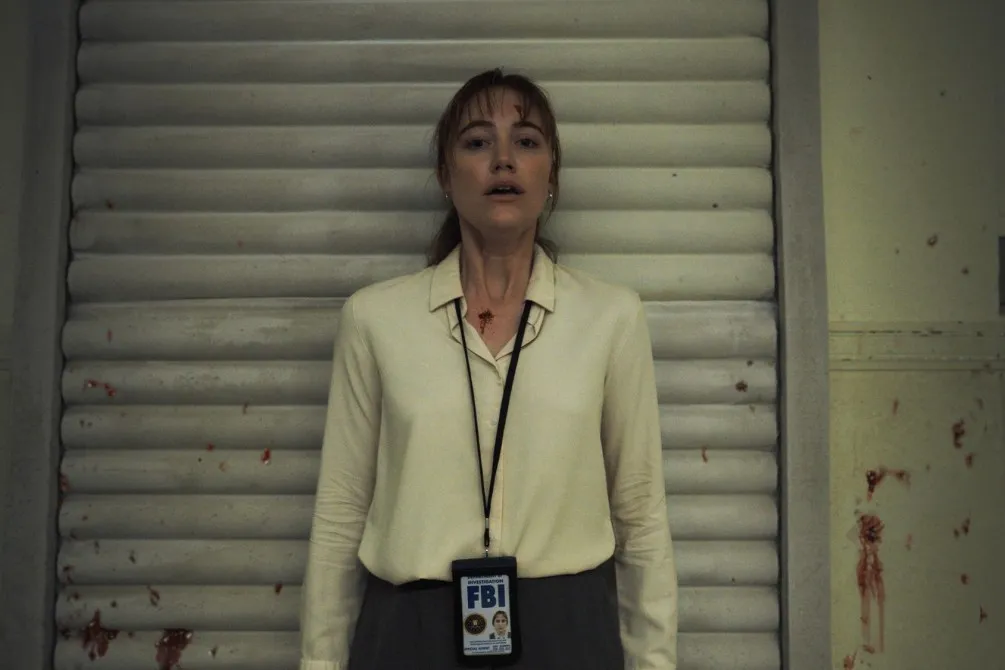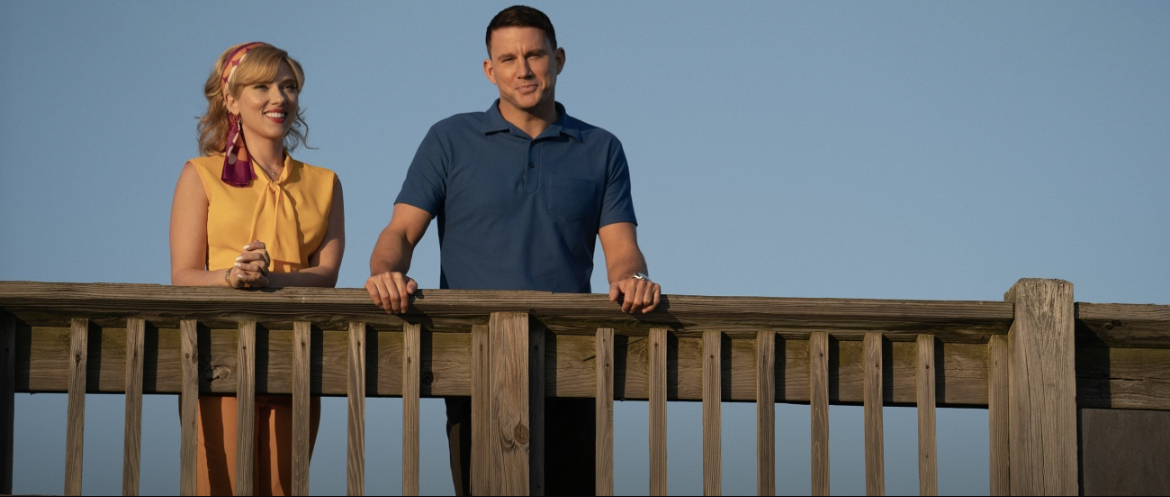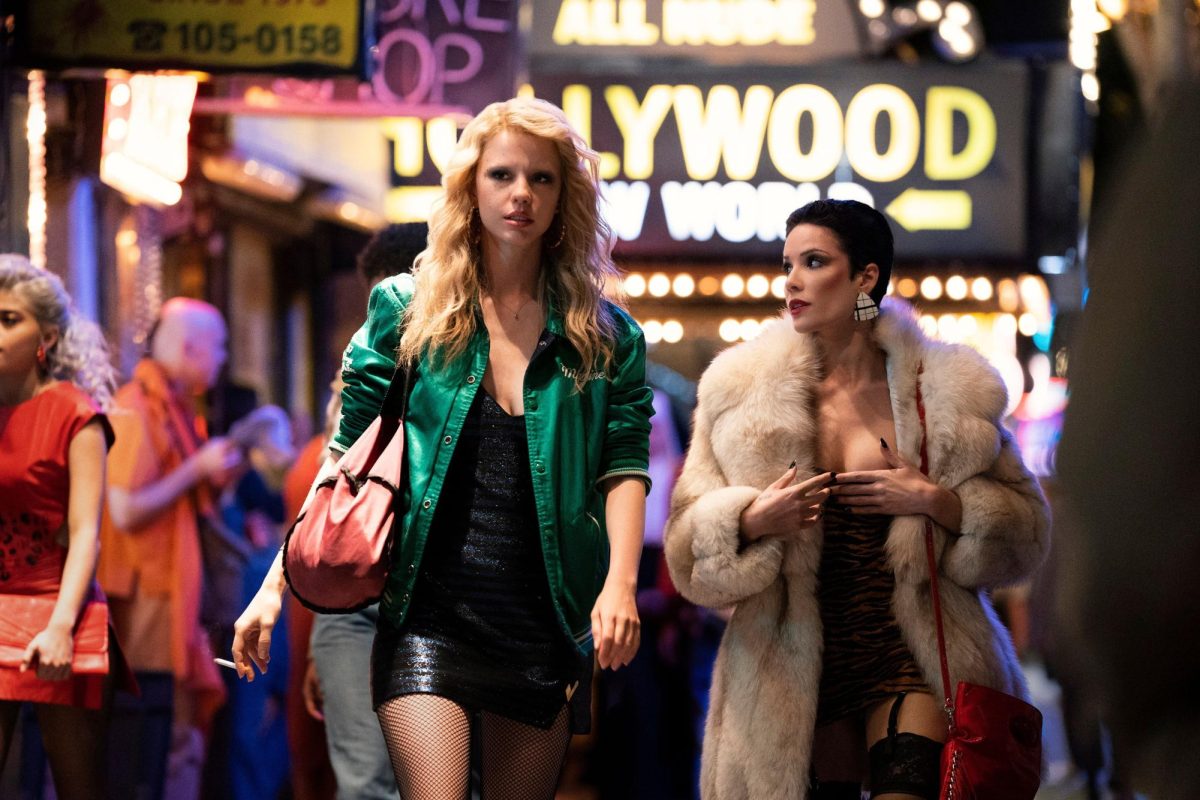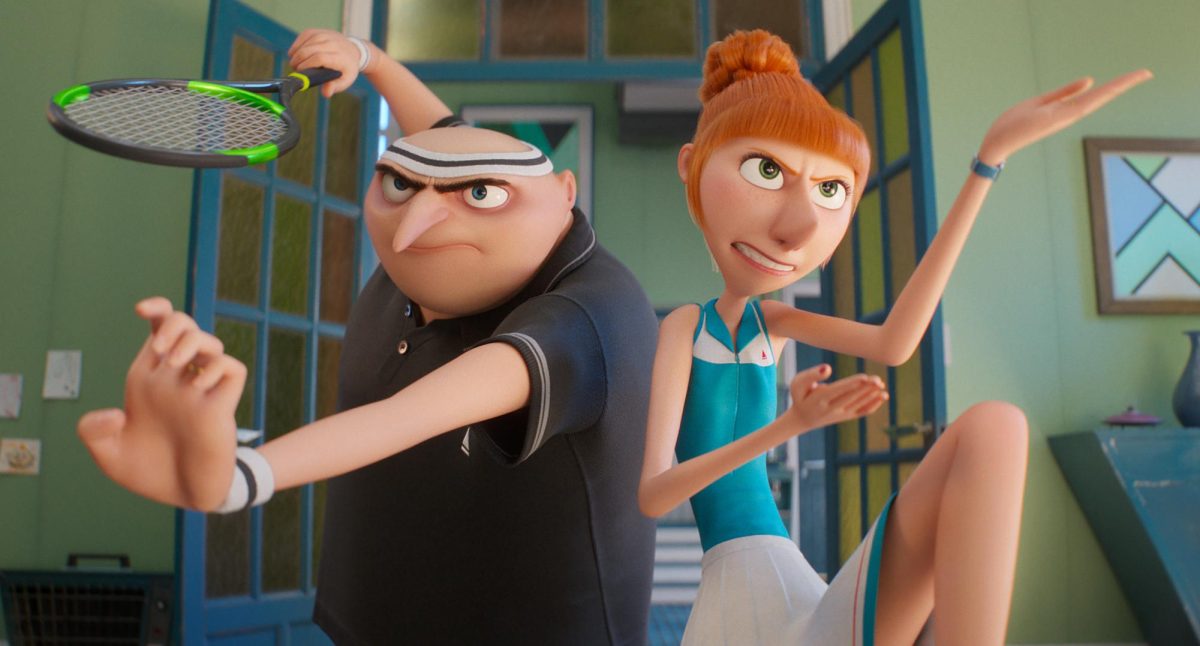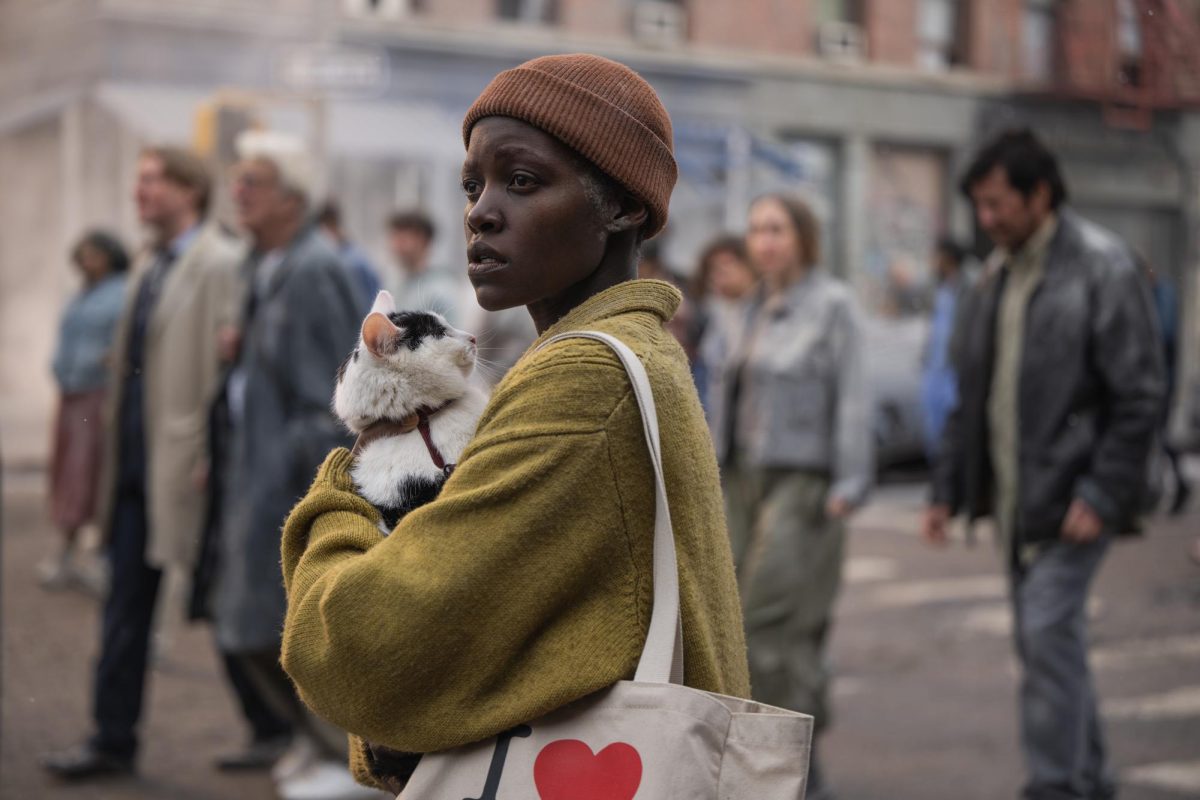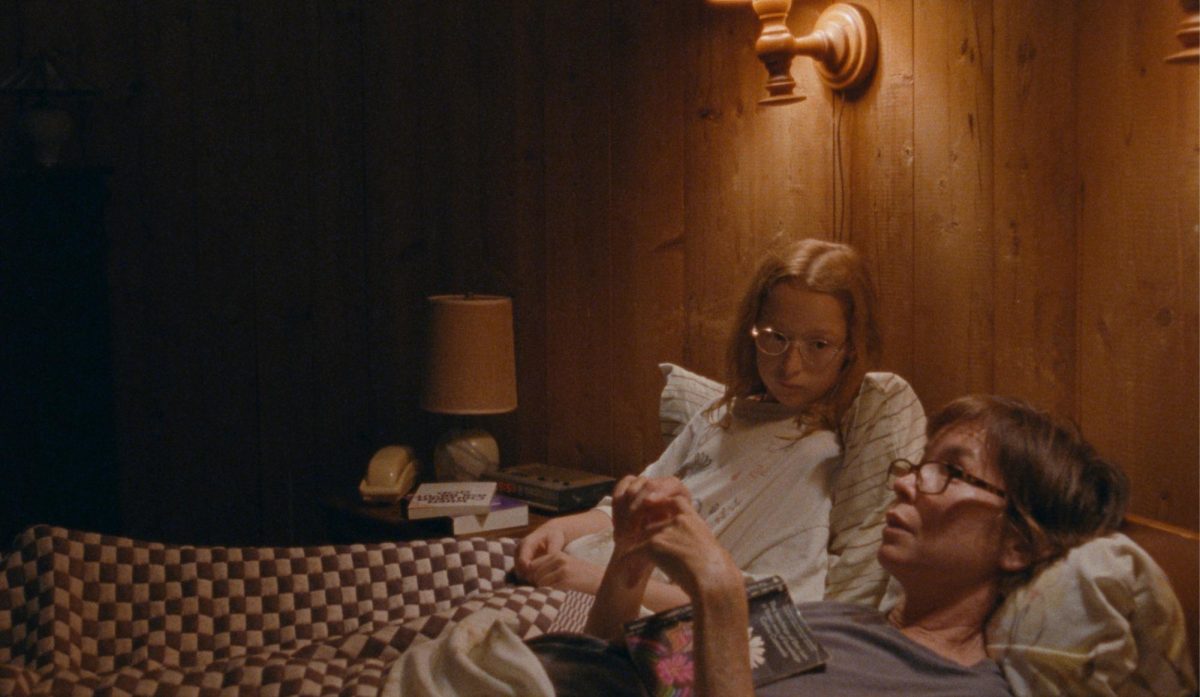Content warning: this article mentions grooming.
Based on the 1985 memoir “Elvis and Me,” Sofia Coppola’s “Priscilla” follows the courtship, marriage and eventual divorce between Priscilla Beaulieu Presley (Cailee Spaeny) and Elvis Presley (Jacob Elordi), examining the intricate relationship through Priscilla’s perspective.
Coppola carefully handles the most controversial aspect of their relationship. At the age of 14, Priscilla met 24-year-old Elvis at an air force base in West Germany. The film transitions from soft pinks and yellows to haunting blacks and blues, crafting a gradual severance from girlhood for the King of Rock and Roll’s wife as their relationship progresses. Featuring no music from Elvis, the film fixates on Priscilla’s experience. Instead, it uses dreamy, melodramatic songs such as The Ramones’ “Baby, I Love You” and Tommy James & the Shondells’ “Crimson & Clover.”
While the film follows Priscilla’s perspective of the marriage, Coppola emphasizes Elvis’ dominating presence through a brilliant set design and impeccable scene cratsmanship, placing a soft-spoken and small Priscilla in the grand arches and plains of Graceland, Elvis’ mansion. Additionally, Coppola’s decision to utilize home-video-style footage during parties and gatherings during the marriage juxtaposes the couple’s public image of glorified happiness with the complex sadness behind closed doors.
Spaeny delivers a breathtaking performance, effortlessly embodying Priscilla’s calm sensitivity from the mere expressions on her face to the constant wondrous yet hesitant look in her eyes. Elordi’s rendition of Elvis fits perfectly into the film: dominant through his screen presence yet muted in his performance — giving room for Priscilla’s story to blossom. The height difference between the two showcases stellar casting, with Elordi at 6’5 and Spaeny at 5’1, illustrating Elvis’s brooding presence over every aspect of Priscilla’s life.
Though the film sticks to the biopic format closely, following Priscilla’s life over the years may seem trite and lazy, but the slow pacing works out in the film’s favor. The rapid transitions from year to year mimic the abnormal pace at which Priscilla matured, living with Elvis at 18 and having a child at 22. Her decision to leave Elvis “for a life of (her) own” could not have had the harrowing impact it did if not for the first shots of a young, bright-eyed Priscilla at a warmly lit diner in West Germany.
Coppola’s direction entrances audiences while Spaeny and Elordi take on a widely known tale and add a tasteful uniqueness with their subtle yet compelling performances. A deeply heart-wrenching story, yet visually beautiful film, “Priscilla” depicts the suffocating impact of fame on individuality and intimacy with elegance.
4 ½ cans of hairspray out of 5



